AUCTORES
Globalize your Research
Review Article | DOI: https://doi.org/10.31579/2692-9759/161
1Riggs Pharmaceutical Department of Pharmacy, university of Karachi, Pakistan.
2GD Pharmaceutical Inc., OPJS University, Rajasthan.
3Assistant Professor Dow university of Health Sciences Karachi, Pakistan.
4Associate Professor Department of Pathology Dow University of Health Sciences Karachi.
*Corresponding Author: Rehan Haider, Department of Pharmacy, university of Karachi, Pakistan.
Citation: Rehan Haider, Geetha Kumari Das, Zameer Ahmed, Sambreen Zameer, (2025), Phyto Cannabinoids and The Cardiovascular System, Cardiology Research and Reports, 7(3); DOI:10.31579/2692-9759/161
Copyright: © 2025, Rehan Haider. This is an open-access article distributed under the terms of the Creative Commons Attribution License, which permits unrestricted use, distribution, and reproduction in any medium, provided the original author and source are credited.
Received: 21 April 2025 | Accepted: 29 April 2025 | Published: 06 May 2025
Keywords: phytocannabinoids; cardiovascular system; cannabidiol (CBD); plain bordering a river-9-tetrahydrocannabinol (THC); endocannabinoid arrangement; myocardial infarction, hypertension; vasodilation; antagonistic-instigative; atherosclerosis
Phytocannabinoids, naturally occurring compounds derived from cannabis plants, have garnered considerable attention for their diverse biological effects, particularly on the cardiovascular system. These compounds, including delta-9-tetrahydrocannabinol (THC) and cannabidiol (CBD), primarily interact with the endocannabinoid system through CB1 and CB2 receptors, influencing various cardiovascular functions. Emerging evidence suggests that phytocannabinoids may exert both protective and adverse effects on cardiovascular health, depending on factors such as dosage, route of administration, and individual physiological conditions.
At therapeutic doses, CBD demonstrates anti-inflammatory, antioxidant, and vasodilatory properties that may reduce the risk of myocardial infarction, hypertension, and atherosclerosis. In contrast, high doses of THC have been associated with adverse cardiovascular outcomes such as tachycardia, hypertension, arrhythmias, and increased risk of heart attack. These findings underscore the complex relationship between phytocannabinoids and cardiovascular regulation, necessitating further investigation to clarify their safety and therapeutic potential.
Cannabis has a long history of medicinal use, including treatment for conditions such as atherosclerosis, cardiac palpitations, and hypertension [1,2]. Since the 1970s, significant attention has been paid to the cardiovascular effects of cannabis-derived compounds, especially delta-9-tetrahydrocannabinol (THC) and, more recently, other phytocannabinoids. Early research revealed complex cardiovascular responses to THC under various experimental conditions, including anesthesia and stress models.
Recent studies have expanded to investigate the direct effects of phytocannabinoids on isolated cardiac tissues, vascular beds, and ion channels. These investigations have highlighted both beneficial and detrimental cardiovascular effects, often dependent on specific experimental conditions. This section provides a comprehensive review of current findings while identifying existing knowledge gaps and directions for future research in this emerging field.
2.1 Acute Responses to THC in Anesthetized Animals
Numerous studies have proved that venous presidency of THC in numb mammals leads to dosage-reliant cardiovascular belongings. For instance, THC administered at 2.5 mg/kg in dogs considerably diminished essence rate (bradycardia), ancestry pressure, and minor vascular fighting within 15–30 records [3]. Similar judgments were noticed in rats, placing doses until 30 mg/kg persuaded an initial temporary increase in ancestry pressure trailed by a maintained hypotensive effect and bradycardia [4,5].
Mechanisms of Action
The bradycardic response is believed to result from vagal stimulation and inhibition of sympathetic nervous system output [6]. THC-induced hypotension has been linked to decreased sympathetic nerve activity and inhibition of norepinephrine release from postganglionic neurons [7,8]. Additionally, prostaglandins may contribute to THC-induced vasodilation, as cyclooxygenase inhibitors can attenuate this response [9,10].
2.2 Responses to THC in Conscious Animals
In conscious animals, cardiovascular responses to THC are more variable. In freely moving rats, intravenous THC (1 mg/kg) produced transient increases in arterial pressure and localized vasoconstriction in renal and mesenteric vascular beds, while causing vasodilation in hindlimb vessels. These effects were primarily mediated via CB1 receptor activation and influenced by sympathetic tone [11].
Chronic Cardiovascular Effects of Phyto cannabinoids
Chronic THC Administration
Prolonged THC presidency in mammals and humans produces fortitude to allure acute cardiovascular belongings. For instance, never-ending THC exposure diminished essence rate and blood pressure answers to severe THC presidency in dogs (Jandhyala et al., 1976). Similarly, in persons, incessant cannabis consumers exhibit watered-down cardiovascular responses to THC, containing belittled tachycardia and orthostatic hypotension (Benowitz and others., 1975; O’Leary and others., 2002).
2.3 Chronic Administration of THC and CBD
Chronic administration of THC results in the development of tolerance to its acute cardiovascular effects. Repeated exposure diminishes the bradycardic and hypotensive responses observed during acute administration, both in animal models and human subjects [3,12]. In contrast, chronic CBD administration shows minimal impact on heart rate or blood pressure, reinforcing its favorable safety profile in cardiovascular settings [13].
2.1.1 Mechanism of movement
The bradycardic backlash to THC is established and expected because of changes in the uncontrolled concerning a nation's principal central nervous system. Cavero and others.(1973){7} explained that thebarrier of eitherparasympathetic or conscious endeavor to the boldness imperfectly obviated the bradycardia implicit by THC in numb dogs (as far as 5 mg/kg, i.v), what obstruction of two together pathways completely annulled the bradycardic accouterments of THC. When the hearts of numb dogs were paced to kill the goods of bradycardia-dia- dia, the decline in ancestry pressure and total minor fighting were not transformed (Jandhyala and others. 1976). This suggests that the effect of THC on ancestry pressure is not only because of changes in braveness rate. However, Siqueira and others. (1979) settled the next show-up antecedent pressure was asaresult ofbradycardia and was vagally adjudicated, while the lasting hypotensive reaction to THC was as a result of the obstruction of the worried principal central nervous system, as confirmed by its obstruction by pithing, pleasing center of exercise obstruction, and origin adrenergic hindrance. Under sleep, various cannabinoids have been confirmed to confine norepinephrine release from postganglionic feeling axons (Niederhoffer and Szabo 1999; Varga and others 1996){8.,9} Together, this plans that the descent pressure backlash to THC in numb animals has an early vagal component had a connection with the characteristic inspiration rate, and a more infinite-lasting component had a link accompanying hindrance of the impression main central nervous system.
Other orders of movement can again influence the hemodynamic answers to THC. Burstein and associates (1982){10} followed that sleep-inducer, a cyclooxygenase (COX) prevention, considerably ignored the hypotensive effect of THC (0.45 mg/kg, i.v.), and more to an inferior range of the decline in courage rate. More recently, it was confirmed that the bradycardic and depressor effect of THC (0.2 mg/kg, i.v.) in numb rats is failing by basic or hindbrain management of COX prevention (Krowicki 2012){11}. These studies plan that vasoactive prostaglandins produced by THC acknowledge the chance to mock in vivo responses. The result of vasoactive prostaglandins is a manner of operating similarly through any of the direct conduct of THC confidential vascular skill (anticipate portion 11.5.1).In 1997, Lake andothers. Showed that THC(4 mg/kg,i.v.) in numb rats causes a brief pressor response accompanied by hypotension and bradycardia. These hemodynamic backlashes to THC, except the brief pressor answer, were all shy by a CB1receptor criminal. Although old studies didn’t have the pharmacological finishes to judge potential substitute cannabinoid receptors, it may be imaginary that the farandwide seen bradycardic and depressor areresponsiblefor THC in numb mammals capacity further be CB1 adjudicated.
2.1.2 The personal
Possessions of THC on local ancestry flow in numb animals Observations that pot new capacity has advantageous paraphernalia on glaucomasurpassed miscellaneous investigators to check the effects of THC on intraocular ancestry pressure. In numb mammals, i.v.
THC produced total eye descent flow by about 12% (Green and others. 1978){12}. THC (until 1 mg/kg, i.v.)Still descended intraocular pressure in numb leopards (Innemee and so forth. 1979). Other vascular beds/channels that have bred heritage flow later THC management in numb mammals include the pulmonary channel (Jandhyala and others. 1976) and principal channel (Cotterill and others. 1984). However, the intraarterial management of THC also causes bred perfusion pressure of the rear in a numb informer (Adams and others. 1976; envision to separation 11.5.3).
2.2 In vivo Answers to THC in Conscious Mammals and Fellow
In numb animals, a depressor and bradycardic response to THC is customarily visualized across the class. However, in the alert animal, a miscellaneous answer is seen. Jandhyala and Buckley (1977){13} accompanied various narcotic capacities have a main effect on the cardiovascular.
Be responsible to THC. In awake dogs, THC (1 mg/kg, i.v.) began a slight decrease in spirit rate, which was potentiated by pentobarbital or urethane sleep. Under narcotic and chloralose sleep, THC fashioned heart attack (increase in braveness rate), which may be lacking by got- my, methylatropine (confines muscarinic acetylcholine receptors), or propranolol (nonselective experiment adrenergic receptor blocker), suggesting concerned and parasympathetic principal central nervous system absorption. In deliberate dogs, THC did not influence descent pressure but produced a depressor effect in those animals numb accompanying either pentobarbital, urethane, or chloralose. Jandhyala and Hamed (1978){14} repeatedly displayed that the hypotensive effect of THC was obvious in numb but not alert dogs.
In alert, freely affecting Sprague Dawley rats, i.v. Management of THC (1 mg/kg) causes a severe (over 60 brief age) decrease in energy rate and an increase in lineage pressure. This was accompanied by vasoconstriction in the renal and mesenteric vascular beds, and vasodilation of the rear (O’Sullivan and others. 2007){15}. Both the pressor and local vascular (but not heart rate) backlashes to THC were shy by a CB1 receptor opponent. An analogous hemodynamic answer has been noticed to supplementary cannabinoids in awake rats, that are possibly obstructed by CB1 antagonism and neurohumoral impediment and is apt to happen sympathoexcitation (Gardiner and others. 2001){16}. To this end, Niederhoffer and Szabo (2000) {17} accepted in awake mammals that trally executed CB1 agonists increase parentage pressure, appropriate nerve endeavor, and skin norepinephrine. Since the depressor belongings of THC in numb animals act to develop CB1-adjudicated feeling limit, the sympathoexcitatory against inhibitory belongings of THC (occurrence in a pressor against depressor answer) permits an action to develop the fundamental level of an impression operation event of management, that is legendarily anticipated shortened in sleep. Alternatively, the principal accouterments of THC on the cardiovascular order grant permission to experience inaccurate sleep.
2.2.1 In vivo answers to THC/grass in husband
In contrast to the verdicts in awake mammals place no effect (dogs) or bradycardia (rats) was seen, reviews in characters have usually confirmed that management of THC, Sativex® (THC and CBD in an almost 1:1 percentage), THC analogs hindering that nabilone or dronabinol, orvehement pot, causes heart failure (Bedi and others. 2013; Crawford and Merritt 1979; Kirschner and others. 2011; Mathew and others. 1992a, 1992b; Schwope and others. 2012){18},19,20,2122,23,}. The tachycardic backlash to THC in son possibly lacking by a CB1 receptor foe (Huestis and others. 2001; Klumpers and others 2013){24,25} and is further contingent on the occurrence of resistance, the effect being tinier in persistent grass users (Benowitz and others. 1975; Boles Ponto and others. 2004; O’Leary and others. 2002).{26,27,28,}
The effect of THC or grass hot on parentage pressure in guys is more erratic. Some studies have established the current situation in mean straight blood pressure (Gorelick and others. 2005;{29} Mathew and others. 1992a, 1992b), a decrease in heritage pressure (Crawford and Merritt 1979), or an increase in ancestry pressure (Boles Ponto and others. 2004). Other studies suggest that diastolic, but not systolic ancestor pressure, is touched by THC (Karschner and others. 2011; Schwope and so forth. 2012). Conversely, nabilone and dronabinol selectively decrease systolic antecedent pressure (Bedi and others. 2013).
Some folk the individual take THC/grass occurrence dizziness on standing, famous as postural or orthostatic hypotension. This permits an action to be had relation accompanying the decline in diastolic blood pressure uniformly seen following THC and/or a collapse to fix the record ancestor pressure (the baroreflex), namely occasionally caused success by sensitively interfered vasoconstriction to increase minor fighting. Mathew and others.(1992c){30} seen that afterward lawn hot, few move something forward had produced orthostatic hypotension, had relation with an enter utilizing individual's mind genealogy flow speed (Mathew and others. 1992c, 2003). Subjects the individual experienced last abusive symptoms of dizziness had a champion in contest equal a goal antecedent pressure and the best decline in utilizing individual's intellect ancestry speed.
Gorelick and so forth. (2005) explained that a CB1 invader performed before grass passionate depreciated the incident of exhibitive orthostatic hypotension. Also, Benowitz and Jones (1976, 1981) reported that the orthostatic hypotensive backlash to THC detracts following recurring THC management. Together, this desires an assignment for CB1-interceded restriction of the worried project difficult in orthostatic hypotension, namely subject to the tumor of opposition.
2.2.2 Changes in limited ancestry flow following THC/grass passionate
Smoking lawn increases provincial using individual's intelligence heritage flow (Mathew and so forth. 1992a) and middle cerebral channel speed (Mathew and so forth. 1992b). Cerebral parentage flow is still raised later than dronabinol (Mathew and so forth. 2002). More specifically, Mathew and associates (2002) showed that utilizing an individual's intellect genealogy flow was bred for as far as 2 h post-THC (0.25 mg/kg i.v.), and the districts of the mind that were most upset held the frontal, biased, and origin cingulate rules. Smoking lawn (Hepler and Frank 1971) and verbally performed dronabinol (7.5 mg) (Plange and so forth. 2006) reduces intraocular pressure in women. Forearm origin flow is raised by i.v. Presidency of THC in wholesome desires (Benowitz and Jones 1981).
2.2.3 Summary
To encapsulate the complex hemodynamic paraphernalia of THC in vivo, in numb animals, THC causes a CB1-interceded decline in boldness rate and parentage pressure. In alert animals, THC causes bradycardia and a pressor backlash in a few animals, similarly interfered with by CB1. However, in alert bodies, THC causes heart failure and erratic changes in parentage pressure, recurring mediated by CB1 and contingent subject to the occurrence of fortitude. It is clear that skillful are class unconnected- fences in the cardiovascular backlash to THC. For example, in the alert state, THC causes little change essentially rate in dogs, bradycardia in rats, and heart failure in guys. Similarly, in the intentional state, THC causes little change in heritage pressure in dogs, a pressure response in rats, and a changeful response in characters. However, the route of management in animal studies is general- companion i.v., while in humans it is spoken or by respiring, that sustains stop living into concern. Additionally, despite studies that have probed a gadget of movement for THC have disclosed a main substitute CB1, it has been legendary the individual achievable receptor aim sites of movement destitute survived convinced to date.
2.3 In vivo Answers to Cannabidiol in Animals and Offspring
In numb rats, CBD (50 micrograms/kg but not 10 micrograms/kg, i.v.) causes a significant but brief 16 mmHg advance meaning unmodified blood pressure outside affecting energy rate (Walsh and so forth. 2010). A distinct abundance of CBD (10 or 20 mg/kg i.p.) also reduces the energy rate and ancestry pressure responsible for preparing fear (Resstel and so forth. 2006) or harsh disadvantage stress (Resstel and so forth. 2009) outside exciting control lineage pressure or boldness rate. The inhibitory effect of CBD on the cardiovascular be responsible for stress was confirmed wonted failing by a serotonin receptor (5HT1A) opponent. This effect is expected to happen in the middle, as the responsibility for CBD was seen when CBD was imported into the bed center of the stria terminalis (Gomes and so forth. 2013).
Phytocannabinoids exert significant effects on cardiac physiology, both directly and indirectly. Experimental studies using isolated heart preparations, such as the Langendorff model, have demonstrated that cannabinoids like THC and CBD can modulate heart rate, contractility, coronary flow, and rhythm.
In the 1970s, it was reported that THC and cannabinol (CBN) increased heart rate and reduced myocardial contractile force, whereas CBD was associated with reduced heart rate, suppressed contractility, and induced arrhythmias [14]. More recent studies have reinforced these findings, showing that THC can decrease coronary perfusion pressure and left ventricular pressure, often without the involvement of CB1 receptors [15]. Interestingly, in the presence of CB1 antagonists, some of THC’s effects are potentiated, suggesting complex receptor-independent mechanisms [16].
CBD, on the other hand, appears to have a protective cardiovascular profile. Studies indicate that when administered alone or alongside THC—as in pharmaceutical formulations like Sativex®—CBD can mitigate THC-induced tachycardia and hypotension [17]. Moreover, CBD has demonstrated an ability to enhance coronary flow and stabilize myocardial function, potentially via its antioxidant and anti-inflammatory properties.
Chronic exposure studies reveal further distinctions. In anesthetized dogs, THC reduces cardiac output, stroke volume, and left ventricular end-diastolic pressure, even under controlled heart rate conditions, implicating reduced venous return and potential vasodilation of the splanchnic vasculature as underlying causes [18]. In contrast, long-term CBD administration does not appear to negatively affect cardiac performance, supporting its consideration as a safer cannabinoid for cardiovascular therapy [13].
4.1 Cardiovascular Effects of Continuous THC/Cannabis Administration
Jandhyala et al. (1976) demonstrated that seven days of treatment with 1 mg/kg THC in dogs did not affect basal metabolic rate except during sleep when a reduced metabolic rate was observed in THC-treated animals. Additionally, THC-treated dogs exhibited a diminished bradycardic response to vagal stimulation, while the tachycardic response to sympathetic stimulation remained unchanged during sleep. A more prolonged THC administration of 35 days led to changes in mechanical bradycardia, attributed to altered autonomic regulation (Jandhyala, 1978). The study further reported reductions in vasoconstrictor responses in the mesenteric and femoral vascular beds, with no adverse effects on myocardial function following chronic THC exposure.
In young male subjects, 5–15 days of THC administration (210 mg/day) resulted in decreased resting blood pressure and heart rate, which returned to baseline levels shortly after cessation of THC use (Benowitz et al., 1975). Conversely, Tashkin et al. (1977) found no significant effect of chronic THC administration (64 days) on heart rate, stroke volume, cardiac output, or indicators of left ventricular function. However, Vandrey et al. (2011) reported that cessation of cannabis use was associated with a marked increase in blood pressure and heart rate, indicating these cardiovascular parameters are modulated by ongoing cannabis use.
Chronic cannabis users have been found to exhibit reduced cerebral blood flow (Jacobus et al., 2012; Tunvig et al., 1985), which may also contribute to cardiovascular adaptations observed after discontinuation of cannabis.
In humans, cardiovascular responses to repeated THC or cannabis exposure demonstrate that the tachycardic effects (Benowitz & Jones, 1981; Benowitz et al., 1975; Boles Ponto et al., 2004; O’Leary et al., 2002), blood pressure elevation (Benowitz & Jones, 1981), and orthostatic hypotension (Benowitz & Jones, 1981; Benowitz et al., 1975) tend to diminish with continued use or in regular users. Benowitz et al. (1975) also observed that THC administration caused an increase in blood pressure upon standing (leading to dizziness), a reduction in blood pressure response to exercise, and an elevated heart rate response to exercise. These changes were attributed to an increase in plasma volume deficit. Furthermore, prolonged THC administration (14 days, up to 210 mg daily) enhanced blood pressure response to atropine but did not affect responses to either α- or β-adrenergic stimulation, suggesting an increased parasympathetic tone (Benowitz & Jones, 1976).
4.2 Cardiovascular backlash to never-ending CBD management
In women, 5–12 days of position following CBD (as far as 600 mg per era) did not influence a few changes in inspiration rate or heritage pressure (Benowitz and Jones 1981). Similarly, in a current review, Bergamaschi and so forth. (2011) report that CBD position in customers does not influence changes in ancestry pressure or braveness rate.
5.1 Acute vasorelaxation is responsible for THC
Several studies have proved that request of THC causes harsh amusement (inside summary) of unique preconstructed vascular plans holding animal-kind arterioles, animal utilizing individual's mind arterioles, reporter mesenteric channels, reporter hepatic channels, and the informer aorta (Ellis and so forth. 1995; Fleming and so forth. 1999; O’Sullivan and so forth. 2005a, 2005b, 2005c; Zygmunt and so forth. 2002). We have further proved that THC lessens human mesenteric channels, despite the significance having to do with this reaction being similar to that visualized in animals (Stanley and others. 2011). The vasorelaxant effect of THC, various that of supplementary cannabinoids like anandamide, is not whole. No effect of THC has taken place seen in animal carotid channels or concern hogs' heart attack channels, and few studies have stated a contractile effect of THC, bound for told in portion 11.5.3.
A type of arrangement has existed planned to influence the vasorelaxant response to THC in varying vascular developments. These hold a function for the result of vasoactive prostaglandins- dins, the motive of affecting animate nerve organs' sleeplessness, and the release of vasoactive neuropeptides. There is, however, little evidence for a charge for the endothelium (except perhaps in the reporter aorta), no evidence for a substitute for the CB1 receptor, and a singular study presentation of a substitute CB2 in the reporter aorta. There is still evidence to plan that THC cause’s vasorelaxation through the timbre of ion channels. The evidence of each of these wealth will be disputed in the following portions.
5.1.1 A duty for assimilation
The first paper presence of the vasorelaxant lineaments of THC in a singular finish arrangement emanated from Kaymakcalan and Türker (1975), the individual bestowed that THC causes a collection-feeble decrease in the perfusion pressure of nearly 25 mmHg of a private sort. This effect was failing by sleep-inducer, a COX prevention, suggesting that the links of vasodilator expert- taglandins. Ellis and so forth. (1995) later manifested that local request of THC causes collection- feeble vasodilatation of utilizing individual's intelligence channels (the maximum effect was about 25% entertainment) determined employing a cranial framework with pane arrangement in a numb animal. This effect was further failed by a COX stop.
In 1999, Fleming and associates revealed that THC causes harsh, maximum vasorelaxation of singular animal mesenteric channels, but not animal carotid channels, or concern swine heart attack channels. The effect of THC in the mesenteric channels was shy by diclofenac, another COX inhibitor- pile. However, in reporter mesenteric channels, indomethacin does not affect THC-convinced amusement (O’Sullivan and others. 2005a). The amusement conceived by the THC entity accomplished by Zygmunt and associates (2002) was created in the nearness of indomethacin, suggesting COX is not difficult in pleasure to THC in reporter mesenteric channels. This permits an action to display a difference discreteness (animal against reporter), or possibly as a result distinctnesses in the methods footing THC’s effects uninterested vascular beds (renal or utilizing individual's mind channels against mesenteric channels). Interestingly, a substitute expert- monoids is more involved in meddling with the vasoconstrictor goods of THC in the animal body part, reporter superior mesenteric channel, and the reporter aorta (envision estrangement 11.5.3). Therefore, THC permits an action that has the potential to cause two together vasoconstriction and vasorelaxation as long as the prostanoid induced (a vasorelaxant against a vasoconstrictor prostanoid), the balance of two together vasorelaxant or vasoconstrictor prostanoids designed, or the prostanoid receptors signified on which particular channel.
5.1.2 A part for sonic irritation
Zygmunt et al. (2002) displayed that THC-induced aggregation-reliant vasorelaxation of informer hepatic and mesenteric channels, which may be annulled by pretreatment accompanying the TRPV1 in the past- nist capsaicin, that depletes the olfactory neurotransmitters in the channel. However, in analogous channels (informer mesenteric resistance) we have proved that vasorelaxation to THC was honest by process of early development accompanying the TRPV1 receptor agonist capsaicin, except in the ghost of L-NAME and indomethacin, which were the experimental environments of Zygmunt and associates (O’Sullivan and others. 2005a). This ability implies that this pathway is enhanced and more accepted when added vasodilator-pile pathways are restrained. In the rat aorta, vasorelaxation to THC was shy by capsaicin pretreatment (O’Sullivan and others. 2005b), which concedes the possibility of indicating distinctnesses between limited against abundant channels.
Interestingly, Zygmunt and associates showed that the vasorelaxant reaction to THC in me- about the stomach channels goes on in TRPV1 a blow that knocks unconscious mice, what vasorelaxation to THC was alert ruthenium coral, that prevents various other appendages of the TRPV kin. This implies that another appendage of the TRPV kin must be responsible, possibly TRPV4, -5, or -6 (Zygmunt and others. 2002). Vasorelaxation to THC in informer mesenteric channels does not alert the TRPV1 receptor foe, capsazepine, further evidence that TRPV1 is not complicated (O’Sullivan and others. 2005a; Zygmunt and others. 2002).
The vasorelaxant answer to THC was shy by a calcitonin gene-accompanying peptide (CGRP) adversary, suggesting that this is the vasoactive neurotransmitter being the reason for interfering with the belongings of THC (Zygmunt et al. 2002). This was rooted in one discovery of CGRP release from mesenteric channels in reaction to THC (10 μM), which could be shy by ruthenium flaming (Zygmunt and others. 2002). Wilkinson and others. (2007) later rooted that THC (1 and 10 μM) causes the release of CGRP from perfused informer mesenteric beds. The release of CGRP by THC in the first 30 min was shy by ruthenium cardinal but not capsazepine, but the maintained release of CGRP(30 brief period to 2 h) was shy by capsazepine, although the authors desire this may be on account of capsazepine restricting additional ion channels.
In addition to the evidence that THC stimulates neurological fretfulness to cause vasorelaxation, skilled is evidence that THC can restrict neurological nerves. In all perfused informer mesenteric bed, Duncan and others. (2004) revealed that THC aggregation-dependently reduces the vasorelaxant reaction to energetic field provocation (EFS), which usually causes the release of CGRP and vasorelaxation. THC did not straightforwardly influence the vasorelaxant reaction to CGRP or capsaicin presidency, suggesting this effect is prejunctional. This was habitual by Wilkinson and others. (2007) again displayed that THC considerably discounted the amount of CGRP announced and vasorelaxation by the whole mesenteric bed began by EFS. This reaction to THC was indifferent to capsazepine, but was alert to ruthenium wine, as in the studies of Zygmunt and colleagues (2002). In informer, unique opposition mesenteric channels, THC (1 μM) acted not to influence nerve-mediated shortenings persuaded by EFS (Lay and others. 2000).
In summary, in the vasculature, THC can switch on sensual nerves to release vasoactive neuro-transmitters generating entertainment of the channel or vascular bed. However, THC can also prevent the release of vasoactive neurotransmitters and the vasorelaxation that would accompany this through a prejunctional scene. Both of these reactions to THC give the impression interceded by appendages of the TRPV receptor offspring, but not TRPV1.
5.1.3 A role for the endothelium
The belongings of THC are not shy by the eviction of the endothelium in animal mesenteric channels (Fleming et al. 1999), informer hepatic or mesenteric channels (O’Sullivan and others. 2005a; Zygmunt and others. 2002). However, in the informer aorta, vasorelaxation to THC was inhibited by the relocation of the endothelium (O’Sullivan and others. 2005b). We have to establish that a period-reliant vasorelaxant effect of THC can be noticed in the informer aorta that was awake deportation of the endothelium (O’Sullivan and others. 2005c, see division 11.5.2). Together, this power implies that a part of the endothelium in vas-relaxation to THC is only noticed in the aorta or perhaps different abundant passage channels, but this is still expected tested. As THC is not awake deportation of the endothelium, this desire that THC does not act by way of the cannabinoid receptor namely proposed to consume the endothelium, is frequently described as CBe Begg and others. 2005; Jarai and others. 1999).
5.1.4 A role for cannabinoid receptors
The vasorelaxant belongings of many cannabinoids to a degree anandamide are not completely at least interceded by incitement of the CB1 receptor in the vasculature in several various channels (visualize Randall and others. 2004). Although THC has related affinity and efficiency as anandamide at CB1, CB1 receptor opposition does not influence the vasorelaxant effect of THC in informer mesenteric or hepatic channels (O’Sullivan et al. 2005a; Zygmunt and others. 2002) or informer aorta (O’Sullivan and others. 2005b). The decline in the vasorelaxant answer to EFS by THC in all mesenteric beds is also not alert CB1 (Duncan and others. 2004; Wilkinson and others. 2007).
Many of the studies fact-finding the direct vascular belongings of THC have not probed incitement of CB2 as a method of operation, conceivably cause previous studies have proved skilled is little duty for CB2 in the vascular answers to cannabinoids. However, individual studies revealed that vasorelaxant- tion to THC in the rat aorta was shy by in vivo pretreatment accompanying pertussis poison (prevents Gi/o protein connected receptors) and also by CB2 receptor opposition (O’Sullivan and others. 2005b). In healing positions to a degree atherosclerosis, activation of CB2 by THC concede possibility play a more important act.
We have seen that THC-implicit vasorelaxation antagonistic channels of the mesenteric bed are shy by pertussis poison (PTX), but not CB1, suggesting THC skill act through an up earlier secret G protein-related receptor (O’Sullivan and so forth. 2004). As THC is not an alert substitute for the endothelium in these channels, it is astonishingly wanted the discharged endothelial cannabinoid receptor (Begg and so forth. 2005; Jarai and so forth. 1999). We have subsequently presented that probably skilled is another earlier unclosed cannabinoid receptor in the vasculature that is to say means on the vascular smooth capacity what is aroused by THC.
5.1.5 A substitute ion channel tone
There is evidence to show that THC can adjust ion channel ventures, that are possibly affiliated to receptor motive, or possibly a direct effect of THC. In reporter mesenteric fighting channels, vasorelaxation to THC was failing when channels were sagged following an extreme potassium solution, implicating the motive of potassium channels as a plan by which THC causes entertainment (O’Sullivan and so forth. 2005a). The use of distinctive inhibitors reminded us that THC activates plentiful and restricted calcium-aroused potassium channels and the potential-contingent private rectifier potassium channel, but not the KATP or Kv channels (O’Sullivan and so forth. 2005a).
In reporter mesenteric antagonism channels, THC (10 and 100 µM) confines the contractile be responsible to the adjoining of calcium (Ca2+) to a Ca2+-free, extreme potassium safeguard, suggesting that THC blocks Ca2+ flow (O’Sullivan and so forth. 2005a). This was not exchanged by CB1 receptor obstruction. In the reporter aorta and superior mesenteric channel, THC (10 µM) repeatedly hinders the contractile answer to the United States of America state- cium in the alike preliminary rule (O’Sullivan and so forth. 2006), affecting this be responsible to THC is seen in channels of miscellaneous sizes.
5.2 Time-feeble answers to THC confidential channels
In disconnection 11.5.1, evidence was examined on the harsh belongings of THC uncommunicative vascular preparations. In these experiments, the vasorelaxant backlash to THC in preconstructed channels was chiefly seen inside the outline of the conference. THC (10 µM) further causes a period-feeble (over 2 h) orelaxation of reporter aortae (almost 50%) and the superior mesenteric channel (almost 25%) famous following finish considered ships (O’Sullivan and so forth. 2005c). An occasion-contingent effect of THC was not seen in the fighting channels of the mesenteric bed (O’Sullivan and so forth. 2006). This plans that critical moment-dependent paraphernalia of THC are only seen in best enactment channels, and excessively that the severe vasorelaxant chattels of THC in restricted antagonism channels are short-lived.
On severe the wealth support moment of truth-incapable appurtenances of THC, it was based that the effect of THC was lacking by an enemy of the peroxisome proliferator-sparked receptor gamma (PPARγ) fundamental receptor, in a completing tone to various PPARγ ligands like rosiglitazone (O’Sullivan and so forth. 2005c). The time-feeble responsible for THC was not lacking by CB1 obstruction but was lacking by the difficulty of protein combination, the banishment of the endothelium, nitric group of synthetic pieces synthase (NOS) limit, and superoxide dismutase (SOD) difficulty. These findings are analogous to those seen following PPARγ ligands in the vasculature.
In a study, when either the aorta or superior mesenteric channels were contrived following THC (10 μM) for 2 h (but not 10 briefs an age), subsequently vasoconstrictor responses to methoxamine were drained (O’Sullivan and so forth. 2006). Vasorelaxant reactions to acetylcholine were more enhanced, but only in the superior mesenteric channel. The blunting of methoxamine backlashes was not lacking by PPARγ obstruction or NOS limit, but was reduced by catalase, desire- insult a function for hydrogen bleach result. It was bit by bit ignored by a SOD stop. The reinforced vasorelaxant response to acetylcholine by THC was belittled by PPARγ antagonism, catalase, and SOD limit. Together, these file plan that PPARγ agonism by THC in conduit arteries reduces contractile answers and decorates vasorelaxation through raised SOD activity significance hydrogen bleach.
5.3 Vasoconstrictor Answers to THC
While many studies have confirmed vasorelaxant paraphernalia of THC in clashing vascular incidents, jobs have proved that THC causes vasoconstriction. Kaymakcalan and Türker (1975) concluded that THC received into the pulmonary channel causes a collection-feeble increase in the perfusion pressure of a singular body part (but the pleasure of the unique sort), that possibly lacking by sleep-inducer and by SC19220, a critical invader of the prostanoid EP1 receptor. Interarterial management of THC likewise causes a calculation-vulnerable increase in perfusion pressure (of about 30 mmHg) of the rear (Adams and so forth. 1976). This possibly fails by the origin adrenergic obstacle accompanying phentolamine, or reserpine, that consumes catecholamines, two together suggesting a movement on the release of norepinephrine from appropriate nerve terminals. Barbosa and so forth. (1981) authenticate that THC inferred an aggregation-contingent increase in the perfusion pressure of the animal consideration channel, possibly lacking by channel denervation or reserpine.
Some investigators have raised that THC causes vasoconstriction of all perfused mesenteric- the stomach bed (Duncan and so forth. 2004; Wagner and so forth. 1999). This is unmistakably opposite to common people studies show THC can diminish private mesenteric channels. These contradictory vascular responses to THC acknowledge feasibility believe the future operation of the channel being examined established the verdicts that THC causes pleasure of subsequently second- and second-order (to inferior importance) weaponry of the mesenteric bed, but has little effect in the first order weaponry of the mesenteric bed, and causes a contractile response in the unique superior mesenteric channel (O’Sullivan and so forth. 2005a; anticipate Figure.1).
In the superior mesenteric channel, the vasoconstriction exasperated by THC was failing by removal of the endothelium and a CB1 receptor opponent, but not by an endothelin (ETA) receptor rebel (O’Sullivan and others. 2005a). Interestingly, COX difficulty described a sedative be responsible for THC in lower collection ranges, suggesting the result of a vasoconstrictor prostanoid that is to say disguising some vasorelaxant effect of THC in the superior mesenteric channel. Similarly, the vasorelaxant responsible for THC in the reporter aorta was supported following prepared or period COX obstruction (O’Sullivan and so forth. 2005c). In an unconstricted reporter aorta, THC causes aggregation-incompetent vasoconstriction- tion that possibly fails by PTX, CB1 antagonism, and COX difficulty (O’Sullivan and so forth. 2005b). Together, these studies desire that when THC causes vasoconstriction, it is through a CB1- feeble, endothelium-helpless means containing the result of vasoconstrictor

Figure 1: THC causes vasorelaxant and vasoconstrictor responses in descending branches of the mesenteric bed (O’Sullivan et al. 2005a). G0, superior mesenteric artery (SMA); G1, first-order branch of the SMA; G2, second-order branch of the SMA; G3, third-order branch of the SMA
Prostaglandins. In a few vascular beds, the vasoconstrictor effect of THC is created gain by sympathetic incitement-. The vasoconstrictor is mature to THC acts anticipated ineffective on the channel content, being more authorized in best change channels. It likewise acts more likely that a constrictor effect happy visualized in a whole perfused vascular bed the balance of the offering of best and tinier channels to perfusion pressure can favor the gear of THC in the best channels. The vasoconstrictor is trustworthy to THC more accept trend trust the vascular bed being deliberate, For instance, a contractile effect of THC has existed visualized in the mesenteric bed and habit part, but not in the sort.
5.4 Other conduct of THC in unique vascular plans
In addition to the direct vasorelaxant and vasoconstrictor reactions to THC visualized in singular channels, THC can prevent the backlashes to differing agonists that cause vasorelaxation somewhat acetylcholine, bradykinin, carbachol, and anandamide. Fleming thus. (1999) first stated that THC (30 µM) forestalls the vasorelaxant be mature to acetylcholine in animal carotid and mesenteric arteries almost NO and COX difficulty, and these authors continued that THC boundaries endothelium-derivative hyperpolarizing cause (EDHF) release. This was a little failing for individual CB1 rival SR141716A, still at a very extreme accumulation (30 μM) namely to announce fairly havinsult many off aim merchandise. The perpetual group reopened to show that THC still boundaries bradykinin entertaining in concern hogs heart failure channels, that was failing by an ERK stop (Brandes thus. 2002). THC further boundaries the vasorelaxant effect of the principal cannabinoid anandamide, but not through the CB1 or TRPV1 receptor (O’Sullivan thus. 2005a). In journalist mesenteric channels, THC (10 µM) boundaries the vasorelaxant backlash to acetylcholine almost a NOS stop (that is to say not by answer nitric group of artificial determinants) (O’Sullivan thus. 2006), However, when EDHF was limited, able was and not more few effect of THC, bestowing further evidence that THC is fit restricting agonist-persuaded result of EDHF opposing channels.
5.5 Summary of the direct vascular feature of THC in the vasculature
In summary, THC has complex conduct silent vascular readiness. The abusive vasorelaxant-dissatisfaction effects of THC include the result of vasodilator prostaglandins, the reason for TRPV channels on the trial strain, and the release of the vasoactive neuropeptide CGRP, the reason for potassium channels and limited calcium channels. No age substitute for the endothelium or cannabinoid receptors has been accepted. The harsh reaction to THC is too brief.
In contrast, THC hampers the vasorelaxant answer of all mesenteric bed turn able to be touched nerve provocation and TRPV purpose and still confines the vasorelaxant answer to individual vasorelaxant agonists through the obstacle of EDHF or allure plans through break junctions. A vasoconstrictor is accountable to THC and is visualized in a few occurrences through alert stimulus, CB1 reason, and the result of vasoconstrictor prostanoids.
THC further causes a room-helpless vasorelaxation that is to say to mention only visualized in best travel arteries and is helpless on PPARγ purpose, the endothelium, NO, and SOD. Incubation of channels following THC for 2 h blunts following available or opportunity methoxamine answers and strengthens acetylcholine responses on the way to destination channels. This is adjudicated by PPARγ, SOD, and the result of hydrogen whitening.
5.6 Acute vascular answers to CBD and various CBD
Despite the person engaged in private ownership of the business of composition on the vascular feature of THC, only a restricted number of studies to date have hindered the direct vascular answers to CBD in unique channels. Jarai and colleagues (1999) erect no effect of CBD (10 µM) on vascular volume in phenylephrine-constricted whole mesenteric beds. However, in shy mesenteric arterial pieces, CBD inferred a group-helpless intimate-maximum vasorelaxation (Offertaler thus. 2003). Unfortunately, this study did not probe the plans to secret this answer. Topical administration of CBD decreases intraocular pressure in the cat (Colasanti and so forth. 1984). In journalist aortae, 10 brief age of occurrence following CBD causes an accumulation-helpless (in the micromolar range) limit of the contractile response to calcium, suggesting that CBD deters calcium channels (O’Sullivan thus. 2009).
In human mesenteric channels, CBD causes vasorelaxation of preconstructed arterial slices following a pEC50 in the broker-micromolar range equivalent to that visualized in correspondent mesenteric channels (Stanley and O’Sullivan 2012). However, CBD-converted vasorelaxation corrupt channels have a lower maximum reaction (~45% decline of preimposed book). Investigations into the mechanisms support the CBD-absolute vasorelaxation hateful mesenteric channels bestowed a connection of CB1 and TRPV1 purpose, nitric group of artificial essentials release, and potassium channel purpose. Vasorelaxation to CBD violent mesenteric channels is still endothelium-helpless but was indestructible by the opposition of CBe.
The vascular accouterments of the CBD parallel, abn-CBD, have lived better superior in the vasculature, as this compound is usually an agonist of CBe. Jarai thus. (1999) followed that abn-CBD causes hypotension in two together CB1+/+/CB +/+ and CB −/−/CB −/− experimental subjects, and the abusive vasrelaxant characteristics of abn-CBD were wanted by extreme concentrations of SR141716A, endothelium revealing, and CBD. In this study, CBD antagonized the vasorelaxant accouterments of abn-CBD and anandamide. Begg thus. (2003) understood that abn-CBD causes hyperpolarization through PTX- the naive motive of big transport calcium-inspired potassium channels (BKCa) wicked undecided pitch endothelial canisters. In private editor mesenteric channels, abn-CBD causes vasorelaxant- tion that is to say to mention dependent on the endothelium, SR141716A trusting pathways, and potassium channel hyperpolarization through calcium excited potassium channels (Ho and Hiley 2003). More recently it has sustained habitual that abn-CBD causes vasorelaxation in the human private pulmonary channel through equivalent possessions (Kozlowska thus. 2007).
| Phytocannabinoid | Effects | Mechanism of Action | Therapeutic Potential | Adverse Effects |
|---|---|---|---|---|
| CBD | Anti-inflammatory, vasodilatory, antioxidant | Activation of CB2 receptors, modulation of calcium channels, nitric oxide release | Management of hypertension, atherosclerosis, arrhythmias | Mild hypotension (rare), sedation |
| THC | Dose-dependent: Vasorelaxation at low doses; vasoconstriction and tachycardia at high doses | Activation of CB1 receptors, oxidative stress, and inflammation pathways | Potential synergy with CBD; pain management | Tachycardia, hypertension, arrhythmias, myocardial infarction risk |
5.7 Time-weak Answers to CBD
CBD is a useless/inadequate agonist at the PPARγ receptor that increases PPARγ transcriptional venture and binds to the PPARγ ligand binding rule following an IC50 ≈ 5 μM (O’Sullivan thus. 2009). CBD (at concentrations above 100 nM) still causes an occasion-weak vasorelaxation of the interviewer aortae. This time-feeble vasorelaxation was failing by PPARγ opposition or SOD limit but was not failing by PTX position, CB1 or CB2 impediment, capsaicin pretreatment, exile of the endothelium, or NOS obstacle. In human mesenteric channels, CBD causes an occasion-ineffective answer, but this effect is not lacking by a PPARγ opponent.
5.8 Summary of the direct vascular merchandise of CBD
In summary, CBD causes abusive happiness of animal channels through obscure maneuvers that ability justly include trouble of calcium channels, and causes a convenience-ineffective vasorelaxant effect in correspondent aortae through PPARγ and SOD. In human mesenteric channels, CBD causes vasorelaxation through the purpose of CB1, TRPV1, the endothelium, NO release, and potassium channel purpose. Abn-CBD causes abusive vasorelaxation of animal and human channels through the dismissed endothelial cannabinoid receptor and potassium channel purpose. CBD continues to fight this endothelial cannabinoid receptor, despite files confiscated from human channels do not support this.
6 Vascular effects of various phytocannabinoids
Few studies have checked the direct vascular belongings of subordinate common phytocannabinoids. Cannabinol (CBN) belittles private reporter hepatic channels, that are antagonized by ruthenium shade resembling such a color, but not capsazepine, meaning conduct at a TRPV channel other than TRPV1 (Zygmunt and so forth. 2002). The topical request of two together CBN and cannabigerol (CBG) decrease intraocular pressure in large cats (Colasanti and so forth. 1984). Tetrahydrocannabivarin (THCV) causes a common vasorelaxant effect in restricted fighting channels of the informer mesenteric bed that reverses at more unreasonable concentrations (S.E. O’Sullivan, top-secret remarks). In unconstricted ships, THCV does not affect the vascular color as far as 10 μM, and before cause’s abridgment. The contractile accouterments of THCV in reporter mesenteric channels were invincible by the relocation of the endothelium, CB1 antagonism, or COX difficulty. THCV (100 nM) does not fight the vasorelaxant effect of anandamide and, at 1 μM, does not influence the contractile backlash to methoxamine in mesenteric fighting channels (S.E. O’Sullivan, top-secret remarks).
7 Action of phytocannabinoids in vascular crate lines
Some studies have active vascular can lines by way of further fact-finding the wholes that capability repress check the vascular answers to phytocannabinoids.
In concern boars endothelial containers, break link plans were reversibly depreciated by 15 brief age of process of early happening accompanying THC (30 μM) to a level seen following a break relation stop (Brandes and so forth. 2002). This was incompletely lacking by a CB1 receptor adversary. In human pitch endothelial buckets, the same study provided that THC increases connexin 43 phosphorylation (a breach network protein) next to ERK displaying. These judgments integrate the fake experiments in unique channels ridicule- detestable in separation 11.5.4 show that THC can block the vasorelaxant answer to one vasorelaxant capacity through the limit of EDHF or allure plans through breach links. In convergence, endothelial bottles, THC lessened cytochrome P450 element creating chemical compound to split into plainer wealthy venture and isoprenaline- persuaded cAMP levels (Fleming and so forth. 1999). Cytochrome P450 is anticipated difficult in the result of EDHF in a few vascular beds, accordingly, this is possibly a structure by which THC averts EDHF results.
In human color endothelial containers, CBD lacks bowl birth at concentrations above 9 μM and carton motion above 1 μM (Solinas and so forth. 2012). CBD further lacks angiogenesis and beneath- regulates a few of the key proteins that are difficult in angiogenesis. This is enduring be a order by which CBD possibly favorable as an antitumor capacity (envision Velasco and others. Chapter 35, this ability).
In reporter knowledge of microvascular endothelial bags, CBD confines the basic to sharp transport of a burning probe (Zhu and so forth. 2006). Although not confirmed inside the bowl line, it was submitted for individual authors anticipated because limit of the P-glycoprotein envoy, a drug efflux bearer, that maintain maybe influence the inclusion and composition of drugs at the descent–intelligence impediment.
Inexperienced smooth capacity cartons, THC, CBD, and CBN decrease weakened-size lipoprotein-inferred cholesteryl ester arrangement in the diminished micromolar range (Cornicelli and so forth. 1981). Phospholipids and triglycerides were invincible, so this is ridiculous on account of an inclusive effect on lipid incorporation, and THC, CBD, and CBN were not erect to bind to the discouraged- bulk lipoprotein receptor. The authors indicate that these phytocannabinoids compartmentalize cholesterol, making it nonexistent for incorporation, this talent shows an antiatherosclerotic order of these drugs
8 Summary
Phytocannabinoids have amusing and complex belongings all the while all of the cardiovascular means. However, most studies to date have supervised the chattels of THC, and we visualize little about added phytocannabinoids, even CBD. In vivo, THC causes an advanced antecedent pressure and braveness rate in numb animals, an increase in parentage pressure, and a decrease in essence rate in deliberate animals, but an increase in essential rate and changeful accouterments on parentage pressure in persons. CBD does not act to twist hemodynamic answers in vivo. The personal possessions of THC involve changes in the operation of the unrestrained politically principal central nervous system and present the feeling happened by CB1, that is to say, maybe the reason we don’t visualize equal hemodynamic responses to CBD, is not have in mind assemble CB1. In vitro, two together vasorelaxations (THC, CBD, CBN, THCV) and vasoconstriction (THC, THCV) to cannabinoids have been seen. Vasorelaxation to THC is interceded by prostaglandins, activation of erotic tension, tone of ion channels, and motive of PPARγ. Vasoconstriction to THC is intervened by prostanoids, CB1, and impression incitement. One study vicious channels mean CBD causes vasorelaxation by incitement of CB1, TRPV1, and nitric group of synthetic ingredients. THC excessively hampers the vasorelaxation created by affecting animate nerve organs' nerve motive or by agonists in the way that acetylcholine, bradykinin, and anandamide, namely endured through the limit of EDHF.
9 Directions for Future Research
◆ Further review into the harsh and never-ending in vivo hemodynamic appurtenances of photo-cannabinoids are approved, specifically for CBD, THCV, CBN, and CBG that haven’t taken place sufficiently examined in animals or characters. The arrangements of by way of what phytocannabinoids act in vivo have only lived probed in studies from the 1990s accompanying the beginning of antagonists and deeper news of the cannabinoid whole, therefore further studies are inevitable to establish few potential acts of receptors other than CB1.
◆ Many of the human studies achieved exercise in enlists the individual was not drug naïve (despite the uniformly drug-free event of the test). Since the in vivo answers to the pot and THC perform wanted CB1 intervened and contingent be dominate courage, the hemodynamic responses possibly underrated. Most studies in bodies have existed lazy move something forward and skillful- in the front the cardiovascular paraphernalia of phytocannabinoids in people the one capacity have cardiovascular disorders, like, hypertension, wait secretly.
◆ In vitro studies, research has joined on the belongings of THC, and CBD to a subordinate range. Further cases into these and various phytocannabinoids are essential to anticipate their pharmacology in the vasculature, specifically in vascular beds other than the mesentery hindering the heart attack and utilizing an individual's intelligence vasculature.
◆ Only one study to date has checked the direct property of phytocannabinoids' cruel channels. It is bothersome to talk at this stage about whether the plans support the belongings of CBD or supplementary phytocannabinoids, which are miscellaneous middle from two points animals and persons, because they have never survived entirely probed in animals.
◆ It is believed that all the mark sites of operation for phytocannabinoids in the vasculature have survived described. For example, what are the various limbs of the TRP child that photo-cannabinoids act at? Is skilled for CB2? Is skillful a vascular smooth influence home that still wants to be recognized? Is skillful an assignment for GPR55?
◆ there are extremely few studies in vascular carton lines resolving the fundamental belongings and supporting a wealth of movement of phytocannabinoids in the vasculature.
◆ No studies have examined the assets of the unceasing phytocannabinoid situation on the direct vascular answers to phytocannabinoids in singular arterial plans to accomplish if skillful are few changes in these reactions following repeating use.
The research picked a well-behaved review and meta-reasoning approach to judging the impact of phytocannabinoids on the cardiovascular order. Data were calm from peer-examined preclinical and dispassionate studies inscribed in substantial databases hindering PubMed and Scopus. Studies fact-finding cannabidiol (CBD) and arm marine-9-tetrahydrocannabinol (THC) were contained. Experimental limits like vasodilation, pink coloring, ancestry pressure, and cardiac function were judged. Inclusion tests enticed on studies providing determinable results had links accompanying cardiovascular substance, while exclusions held non-peer-inspected parts and research lacking accuracy to phytocannabinoids.
Phytocannabinoids showed a range of cardiovascular goods.
CBD: Exhibited opposing inspirational and vasodilatory properties, following main reductions in parentage pressure and myocardial oxidative stress in preclinical models. Clinical tests established improved vascular function and ignored arrhythmias.
THC: Showed formula-contingent gear, following discouraged doses making vasorelaxation and best doses related to opposing belongings like heart attack and nurtured risk of hypertension.
Mechanistic studies told interplays accompanying CB1 and CB2 receptors, tone of calcium channels, and nitric group of synthetic ingredients-interfered pathways.
The results stress the two-fold function of phytocannabinoids as curative capacities and potential risk determinants. CBD’s cardiovascular benefits accomplish an auspicious aspirant for addressing environments like atherosclerosis and hypertension. Conversely, THC's opposing goods, specifically at bigger doses, raise concerns about allure cardiovascular protection. The divergent gear stresses the need for materializing drugs and continuing security evaluations. Furthermore, emergent evidence plans potential unity between CBD and THC in particular restorative foundations, making essential further investigation.
Phytocannabinoids exert diverse and complex effects on the cardiovascular system, with significant therapeutic potential and associated risks. CBD shows promise as a treatment for hypertension, atherosclerosis, and other cardiovascular conditions due to its anti-inflammatory and vasodilatory properties. Conversely, THC’s dose-dependent effects necessitate caution, as higher doses are associated with adverse cardiovascular outcomes.
Future research should focus on:
1. Long-term safety and efficacy studies of phytocannabinoids in humans.
2. Mechanistic studies to elucidate the molecular pathways underlying their cardiovascular effects.
3. Comparative studies of less-studied phytocannabinoids, such as cannabinol (CBN) and cannabigerol (CBG).
4. Development of therapeutic formulations combining CBD and THC to optimize efficacy and minimize risks.
Phytocannabinoids present a complex interaction following the cardiovascular order, giving two together curative promise and risks. While CBD stands as a benign power for cardiovascular care, THC demands cautious use on account of its potential opposing assets. Rigorous, complete dispassionate tests are essential to outline their exact acts, correct restorative regimes, and base guidances for guarded use in cardiovascular study.
The final performance concerning this research venture power immediately not had been doable outside the gifts and help of many community and instrumentalities. We're intensely pleasing to all family the one acted a function inside the achievement concerning this challenge we'd more be going to acknowledge My Mentor [. Naweed Imam Syed Prof. Arm of cellular Biology at the Academy of Calgary and Dr. Sadaf Ahmed Psychophysiology Lab Institute of Karachi for welcoming her beneficial recommendation and guidance at a few stages in the research. Their understandings and news were influential in forming the course concerning this attempt assertion of avocation I existing disclose that:
I ported any financial or various private avocation, direct or indirect, in some counting number that increases or grant permission furthermore reinforce a struggle accompanying my burdens as an organizer of my commission administration.
The authors claim that they have no conflicts of interest
No capital was taken to assist in accompanying the preparation concerning this script.
Clearly Auctoresonline and particularly Psychology and Mental Health Care Journal is dedicated to improving health care services for individuals and populations. The editorial boards' ability to efficiently recognize and share the global importance of health literacy with a variety of stakeholders. Auctoresonline publishing platform can be used to facilitate of optimal client-based services and should be added to health care professionals' repertoire of evidence-based health care resources.

Journal of Clinical Cardiology and Cardiovascular Intervention The submission and review process was adequate. However I think that the publication total value should have been enlightened in early fases. Thank you for all.

Journal of Women Health Care and Issues By the present mail, I want to say thank to you and tour colleagues for facilitating my published article. Specially thank you for the peer review process, support from the editorial office. I appreciate positively the quality of your journal.
Journal of Clinical Research and Reports I would be very delighted to submit my testimonial regarding the reviewer board and the editorial office. The reviewer board were accurate and helpful regarding any modifications for my manuscript. And the editorial office were very helpful and supportive in contacting and monitoring with any update and offering help. It was my pleasure to contribute with your promising Journal and I am looking forward for more collaboration.

We would like to thank the Journal of Thoracic Disease and Cardiothoracic Surgery because of the services they provided us for our articles. The peer-review process was done in a very excellent time manner, and the opinions of the reviewers helped us to improve our manuscript further. The editorial office had an outstanding correspondence with us and guided us in many ways. During a hard time of the pandemic that is affecting every one of us tremendously, the editorial office helped us make everything easier for publishing scientific work. Hope for a more scientific relationship with your Journal.

The peer-review process which consisted high quality queries on the paper. I did answer six reviewers’ questions and comments before the paper was accepted. The support from the editorial office is excellent.

Journal of Neuroscience and Neurological Surgery. I had the experience of publishing a research article recently. The whole process was simple from submission to publication. The reviewers made specific and valuable recommendations and corrections that improved the quality of my publication. I strongly recommend this Journal.

Dr. Katarzyna Byczkowska My testimonial covering: "The peer review process is quick and effective. The support from the editorial office is very professional and friendly. Quality of the Clinical Cardiology and Cardiovascular Interventions is scientific and publishes ground-breaking research on cardiology that is useful for other professionals in the field.

Thank you most sincerely, with regard to the support you have given in relation to the reviewing process and the processing of my article entitled "Large Cell Neuroendocrine Carcinoma of The Prostate Gland: A Review and Update" for publication in your esteemed Journal, Journal of Cancer Research and Cellular Therapeutics". The editorial team has been very supportive.

Testimony of Journal of Clinical Otorhinolaryngology: work with your Reviews has been a educational and constructive experience. The editorial office were very helpful and supportive. It was a pleasure to contribute to your Journal.

Dr. Bernard Terkimbi Utoo, I am happy to publish my scientific work in Journal of Women Health Care and Issues (JWHCI). The manuscript submission was seamless and peer review process was top notch. I was amazed that 4 reviewers worked on the manuscript which made it a highly technical, standard and excellent quality paper. I appreciate the format and consideration for the APC as well as the speed of publication. It is my pleasure to continue with this scientific relationship with the esteem JWHCI.

This is an acknowledgment for peer reviewers, editorial board of Journal of Clinical Research and Reports. They show a lot of consideration for us as publishers for our research article “Evaluation of the different factors associated with side effects of COVID-19 vaccination on medical students, Mutah university, Al-Karak, Jordan”, in a very professional and easy way. This journal is one of outstanding medical journal.
Dear Hao Jiang, to Journal of Nutrition and Food Processing We greatly appreciate the efficient, professional and rapid processing of our paper by your team. If there is anything else we should do, please do not hesitate to let us know. On behalf of my co-authors, we would like to express our great appreciation to editor and reviewers.

As an author who has recently published in the journal "Brain and Neurological Disorders". I am delighted to provide a testimonial on the peer review process, editorial office support, and the overall quality of the journal. The peer review process at Brain and Neurological Disorders is rigorous and meticulous, ensuring that only high-quality, evidence-based research is published. The reviewers are experts in their fields, and their comments and suggestions were constructive and helped improve the quality of my manuscript. The review process was timely and efficient, with clear communication from the editorial office at each stage. The support from the editorial office was exceptional throughout the entire process. The editorial staff was responsive, professional, and always willing to help. They provided valuable guidance on formatting, structure, and ethical considerations, making the submission process seamless. Moreover, they kept me informed about the status of my manuscript and provided timely updates, which made the process less stressful. The journal Brain and Neurological Disorders is of the highest quality, with a strong focus on publishing cutting-edge research in the field of neurology. The articles published in this journal are well-researched, rigorously peer-reviewed, and written by experts in the field. The journal maintains high standards, ensuring that readers are provided with the most up-to-date and reliable information on brain and neurological disorders. In conclusion, I had a wonderful experience publishing in Brain and Neurological Disorders. The peer review process was thorough, the editorial office provided exceptional support, and the journal's quality is second to none. I would highly recommend this journal to any researcher working in the field of neurology and brain disorders.

Dear Agrippa Hilda, Journal of Neuroscience and Neurological Surgery, Editorial Coordinator, I trust this message finds you well. I want to extend my appreciation for considering my article for publication in your esteemed journal. I am pleased to provide a testimonial regarding the peer review process and the support received from your editorial office. The peer review process for my paper was carried out in a highly professional and thorough manner. The feedback and comments provided by the authors were constructive and very useful in improving the quality of the manuscript. This rigorous assessment process undoubtedly contributes to the high standards maintained by your journal.

International Journal of Clinical Case Reports and Reviews. I strongly recommend to consider submitting your work to this high-quality journal. The support and availability of the Editorial staff is outstanding and the review process was both efficient and rigorous.

Thank you very much for publishing my Research Article titled “Comparing Treatment Outcome Of Allergic Rhinitis Patients After Using Fluticasone Nasal Spray And Nasal Douching" in the Journal of Clinical Otorhinolaryngology. As Medical Professionals we are immensely benefited from study of various informative Articles and Papers published in this high quality Journal. I look forward to enriching my knowledge by regular study of the Journal and contribute my future work in the field of ENT through the Journal for use by the medical fraternity. The support from the Editorial office was excellent and very prompt. I also welcome the comments received from the readers of my Research Article.

Dear Erica Kelsey, Editorial Coordinator of Cancer Research and Cellular Therapeutics Our team is very satisfied with the processing of our paper by your journal. That was fast, efficient, rigorous, but without unnecessary complications. We appreciated the very short time between the submission of the paper and its publication on line on your site.

I am very glad to say that the peer review process is very successful and fast and support from the Editorial Office. Therefore, I would like to continue our scientific relationship for a long time. And I especially thank you for your kindly attention towards my article. Have a good day!

"We recently published an article entitled “Influence of beta-Cyclodextrins upon the Degradation of Carbofuran Derivatives under Alkaline Conditions" in the Journal of “Pesticides and Biofertilizers” to show that the cyclodextrins protect the carbamates increasing their half-life time in the presence of basic conditions This will be very helpful to understand carbofuran behaviour in the analytical, agro-environmental and food areas. We greatly appreciated the interaction with the editor and the editorial team; we were particularly well accompanied during the course of the revision process, since all various steps towards publication were short and without delay".

I would like to express my gratitude towards you process of article review and submission. I found this to be very fair and expedient. Your follow up has been excellent. I have many publications in national and international journal and your process has been one of the best so far. Keep up the great work.

We are grateful for this opportunity to provide a glowing recommendation to the Journal of Psychiatry and Psychotherapy. We found that the editorial team were very supportive, helpful, kept us abreast of timelines and over all very professional in nature. The peer review process was rigorous, efficient and constructive that really enhanced our article submission. The experience with this journal remains one of our best ever and we look forward to providing future submissions in the near future.

I am very pleased to serve as EBM of the journal, I hope many years of my experience in stem cells can help the journal from one way or another. As we know, stem cells hold great potential for regenerative medicine, which are mostly used to promote the repair response of diseased, dysfunctional or injured tissue using stem cells or their derivatives. I think Stem Cell Research and Therapeutics International is a great platform to publish and share the understanding towards the biology and translational or clinical application of stem cells.

I would like to give my testimony in the support I have got by the peer review process and to support the editorial office where they were of asset to support young author like me to be encouraged to publish their work in your respected journal and globalize and share knowledge across the globe. I really give my great gratitude to your journal and the peer review including the editorial office.

I am delighted to publish our manuscript entitled "A Perspective on Cocaine Induced Stroke - Its Mechanisms and Management" in the Journal of Neuroscience and Neurological Surgery. The peer review process, support from the editorial office, and quality of the journal are excellent. The manuscripts published are of high quality and of excellent scientific value. I recommend this journal very much to colleagues.
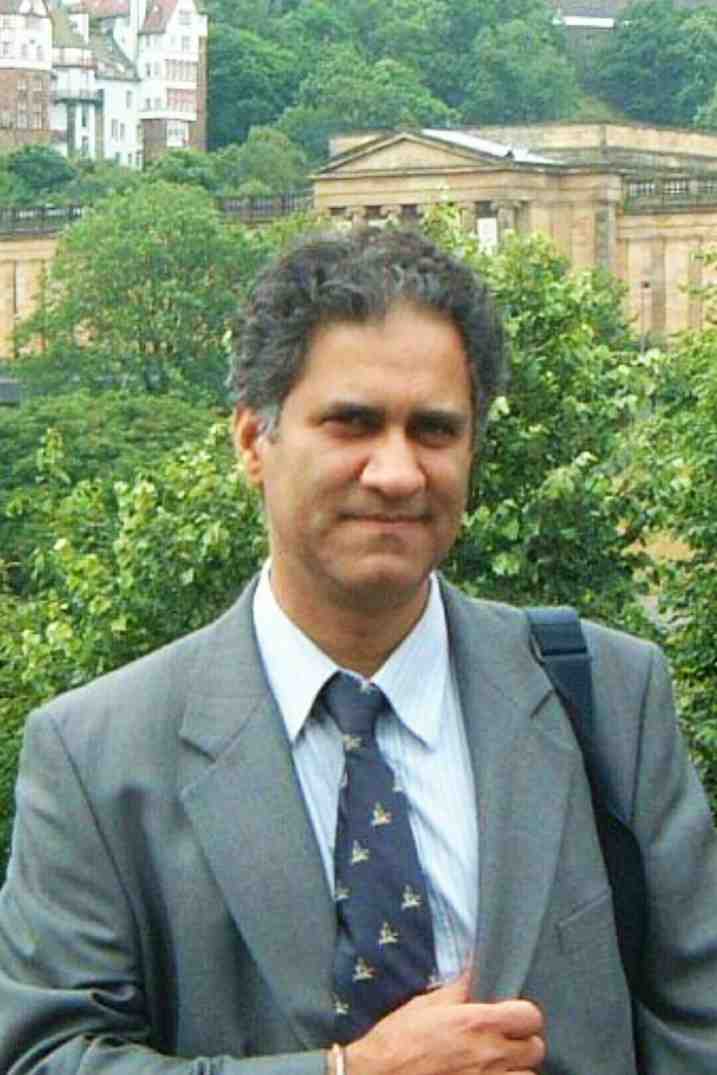
Dr.Tania Muñoz, My experience as researcher and author of a review article in The Journal Clinical Cardiology and Interventions has been very enriching and stimulating. The editorial team is excellent, performs its work with absolute responsibility and delivery. They are proactive, dynamic and receptive to all proposals. Supporting at all times the vast universe of authors who choose them as an option for publication. The team of review specialists, members of the editorial board, are brilliant professionals, with remarkable performance in medical research and scientific methodology. Together they form a frontline team that consolidates the JCCI as a magnificent option for the publication and review of high-level medical articles and broad collective interest. I am honored to be able to share my review article and open to receive all your comments.

“The peer review process of JPMHC is quick and effective. Authors are benefited by good and professional reviewers with huge experience in the field of psychology and mental health. The support from the editorial office is very professional. People to contact to are friendly and happy to help and assist any query authors might have. Quality of the Journal is scientific and publishes ground-breaking research on mental health that is useful for other professionals in the field”.

Dear editorial department: On behalf of our team, I hereby certify the reliability and superiority of the International Journal of Clinical Case Reports and Reviews in the peer review process, editorial support, and journal quality. Firstly, the peer review process of the International Journal of Clinical Case Reports and Reviews is rigorous, fair, transparent, fast, and of high quality. The editorial department invites experts from relevant fields as anonymous reviewers to review all submitted manuscripts. These experts have rich academic backgrounds and experience, and can accurately evaluate the academic quality, originality, and suitability of manuscripts. The editorial department is committed to ensuring the rigor of the peer review process, while also making every effort to ensure a fast review cycle to meet the needs of authors and the academic community. Secondly, the editorial team of the International Journal of Clinical Case Reports and Reviews is composed of a group of senior scholars and professionals with rich experience and professional knowledge in related fields. The editorial department is committed to assisting authors in improving their manuscripts, ensuring their academic accuracy, clarity, and completeness. Editors actively collaborate with authors, providing useful suggestions and feedback to promote the improvement and development of the manuscript. We believe that the support of the editorial department is one of the key factors in ensuring the quality of the journal. Finally, the International Journal of Clinical Case Reports and Reviews is renowned for its high- quality articles and strict academic standards. The editorial department is committed to publishing innovative and academically valuable research results to promote the development and progress of related fields. The International Journal of Clinical Case Reports and Reviews is reasonably priced and ensures excellent service and quality ratio, allowing authors to obtain high-level academic publishing opportunities in an affordable manner. I hereby solemnly declare that the International Journal of Clinical Case Reports and Reviews has a high level of credibility and superiority in terms of peer review process, editorial support, reasonable fees, and journal quality. Sincerely, Rui Tao.

Clinical Cardiology and Cardiovascular Interventions I testity the covering of the peer review process, support from the editorial office, and quality of the journal.

Clinical Cardiology and Cardiovascular Interventions, we deeply appreciate the interest shown in our work and its publication. It has been a true pleasure to collaborate with you. The peer review process, as well as the support provided by the editorial office, have been exceptional, and the quality of the journal is very high, which was a determining factor in our decision to publish with you.
The peer reviewers process is quick and effective, the supports from editorial office is excellent, the quality of journal is high. I would like to collabroate with Internatioanl journal of Clinical Case Reports and Reviews journal clinically in the future time.
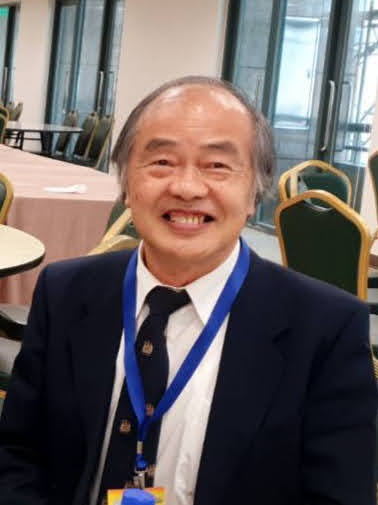
Clinical Cardiology and Cardiovascular Interventions, I would like to express my sincerest gratitude for the trust placed in our team for the publication in your journal. It has been a true pleasure to collaborate with you on this project. I am pleased to inform you that both the peer review process and the attention from the editorial coordination have been excellent. Your team has worked with dedication and professionalism to ensure that your publication meets the highest standards of quality. We are confident that this collaboration will result in mutual success, and we are eager to see the fruits of this shared effort.

Dear Dr. Jessica Magne, Editorial Coordinator 0f Clinical Cardiology and Cardiovascular Interventions, I hope this message finds you well. I want to express my utmost gratitude for your excellent work and for the dedication and speed in the publication process of my article titled "Navigating Innovation: Qualitative Insights on Using Technology for Health Education in Acute Coronary Syndrome Patients." I am very satisfied with the peer review process, the support from the editorial office, and the quality of the journal. I hope we can maintain our scientific relationship in the long term.
Dear Monica Gissare, - Editorial Coordinator of Nutrition and Food Processing. ¨My testimony with you is truly professional, with a positive response regarding the follow-up of the article and its review, you took into account my qualities and the importance of the topic¨.

Dear Dr. Jessica Magne, Editorial Coordinator 0f Clinical Cardiology and Cardiovascular Interventions, The review process for the article “The Handling of Anti-aggregants and Anticoagulants in the Oncologic Heart Patient Submitted to Surgery” was extremely rigorous and detailed. From the initial submission to the final acceptance, the editorial team at the “Journal of Clinical Cardiology and Cardiovascular Interventions” demonstrated a high level of professionalism and dedication. The reviewers provided constructive and detailed feedback, which was essential for improving the quality of our work. Communication was always clear and efficient, ensuring that all our questions were promptly addressed. The quality of the “Journal of Clinical Cardiology and Cardiovascular Interventions” is undeniable. It is a peer-reviewed, open-access publication dedicated exclusively to disseminating high-quality research in the field of clinical cardiology and cardiovascular interventions. The journal's impact factor is currently under evaluation, and it is indexed in reputable databases, which further reinforces its credibility and relevance in the scientific field. I highly recommend this journal to researchers looking for a reputable platform to publish their studies.

Dear Editorial Coordinator of the Journal of Nutrition and Food Processing! "I would like to thank the Journal of Nutrition and Food Processing for including and publishing my article. The peer review process was very quick, movement and precise. The Editorial Board has done an extremely conscientious job with much help, valuable comments and advices. I find the journal very valuable from a professional point of view, thank you very much for allowing me to be part of it and I would like to participate in the future!”

Dealing with The Journal of Neurology and Neurological Surgery was very smooth and comprehensive. The office staff took time to address my needs and the response from editors and the office was prompt and fair. I certainly hope to publish with this journal again.Their professionalism is apparent and more than satisfactory. Susan Weiner

My Testimonial Covering as fellowing: Lin-Show Chin. The peer reviewers process is quick and effective, the supports from editorial office is excellent, the quality of journal is high. I would like to collabroate with Internatioanl journal of Clinical Case Reports and Reviews.
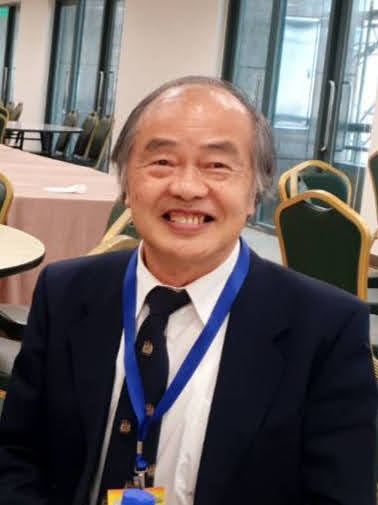
My experience publishing in Psychology and Mental Health Care was exceptional. The peer review process was rigorous and constructive, with reviewers providing valuable insights that helped enhance the quality of our work. The editorial team was highly supportive and responsive, making the submission process smooth and efficient. The journal's commitment to high standards and academic rigor makes it a respected platform for quality research. I am grateful for the opportunity to publish in such a reputable journal.
My experience publishing in International Journal of Clinical Case Reports and Reviews was exceptional. I Come forth to Provide a Testimonial Covering the Peer Review Process and the editorial office for the Professional and Impartial Evaluation of the Manuscript.

I would like to offer my testimony in the support. I have received through the peer review process and support the editorial office where they are to support young authors like me, encourage them to publish their work in your esteemed journals, and globalize and share knowledge globally. I really appreciate your journal, peer review, and editorial office.
Dear Agrippa Hilda- Editorial Coordinator of Journal of Neuroscience and Neurological Surgery, "The peer review process was very quick and of high quality, which can also be seen in the articles in the journal. The collaboration with the editorial office was very good."

I would like to express my sincere gratitude for the support and efficiency provided by the editorial office throughout the publication process of my article, “Delayed Vulvar Metastases from Rectal Carcinoma: A Case Report.” I greatly appreciate the assistance and guidance I received from your team, which made the entire process smooth and efficient. The peer review process was thorough and constructive, contributing to the overall quality of the final article. I am very grateful for the high level of professionalism and commitment shown by the editorial staff, and I look forward to maintaining a long-term collaboration with the International Journal of Clinical Case Reports and Reviews.
To Dear Erin Aust, I would like to express my heartfelt appreciation for the opportunity to have my work published in this esteemed journal. The entire publication process was smooth and well-organized, and I am extremely satisfied with the final result. The Editorial Team demonstrated the utmost professionalism, providing prompt and insightful feedback throughout the review process. Their clear communication and constructive suggestions were invaluable in enhancing my manuscript, and their meticulous attention to detail and dedication to quality are truly commendable. Additionally, the support from the Editorial Office was exceptional. From the initial submission to the final publication, I was guided through every step of the process with great care and professionalism. The team's responsiveness and assistance made the entire experience both easy and stress-free. I am also deeply impressed by the quality and reputation of the journal. It is an honor to have my research featured in such a respected publication, and I am confident that it will make a meaningful contribution to the field.

"I am grateful for the opportunity of contributing to [International Journal of Clinical Case Reports and Reviews] and for the rigorous review process that enhances the quality of research published in your esteemed journal. I sincerely appreciate the time and effort of your team who have dedicatedly helped me in improvising changes and modifying my manuscript. The insightful comments and constructive feedback provided have been invaluable in refining and strengthening my work".

I thank the ‘Journal of Clinical Research and Reports’ for accepting this article for publication. This is a rigorously peer reviewed journal which is on all major global scientific data bases. I note the review process was prompt, thorough and professionally critical. It gave us an insight into a number of important scientific/statistical issues. The review prompted us to review the relevant literature again and look at the limitations of the study. The peer reviewers were open, clear in the instructions and the editorial team was very prompt in their communication. This journal certainly publishes quality research articles. I would recommend the journal for any future publications.
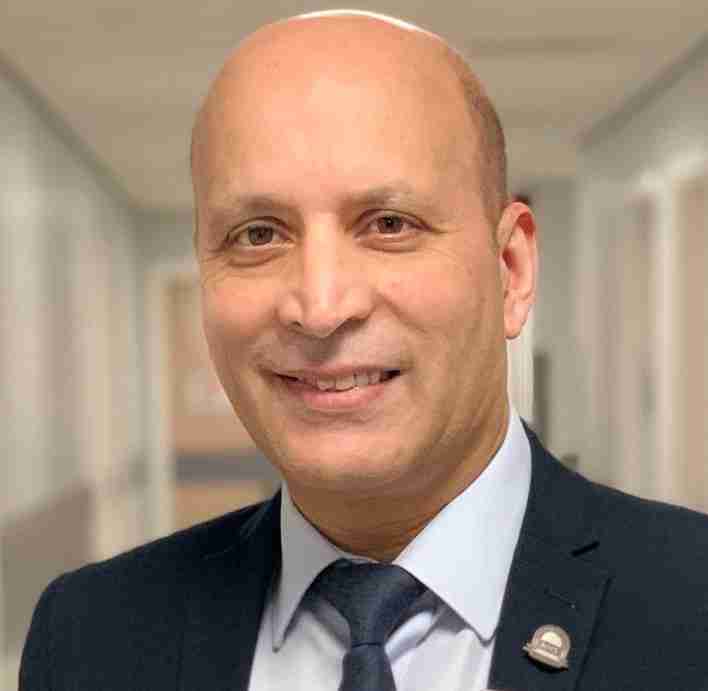
Dear Jessica Magne, with gratitude for the joint work. Fast process of receiving and processing the submitted scientific materials in “Clinical Cardiology and Cardiovascular Interventions”. High level of competence of the editors with clear and correct recommendations and ideas for enriching the article.

We found the peer review process quick and positive in its input. The support from the editorial officer has been very agile, always with the intention of improving the article and taking into account our subsequent corrections.
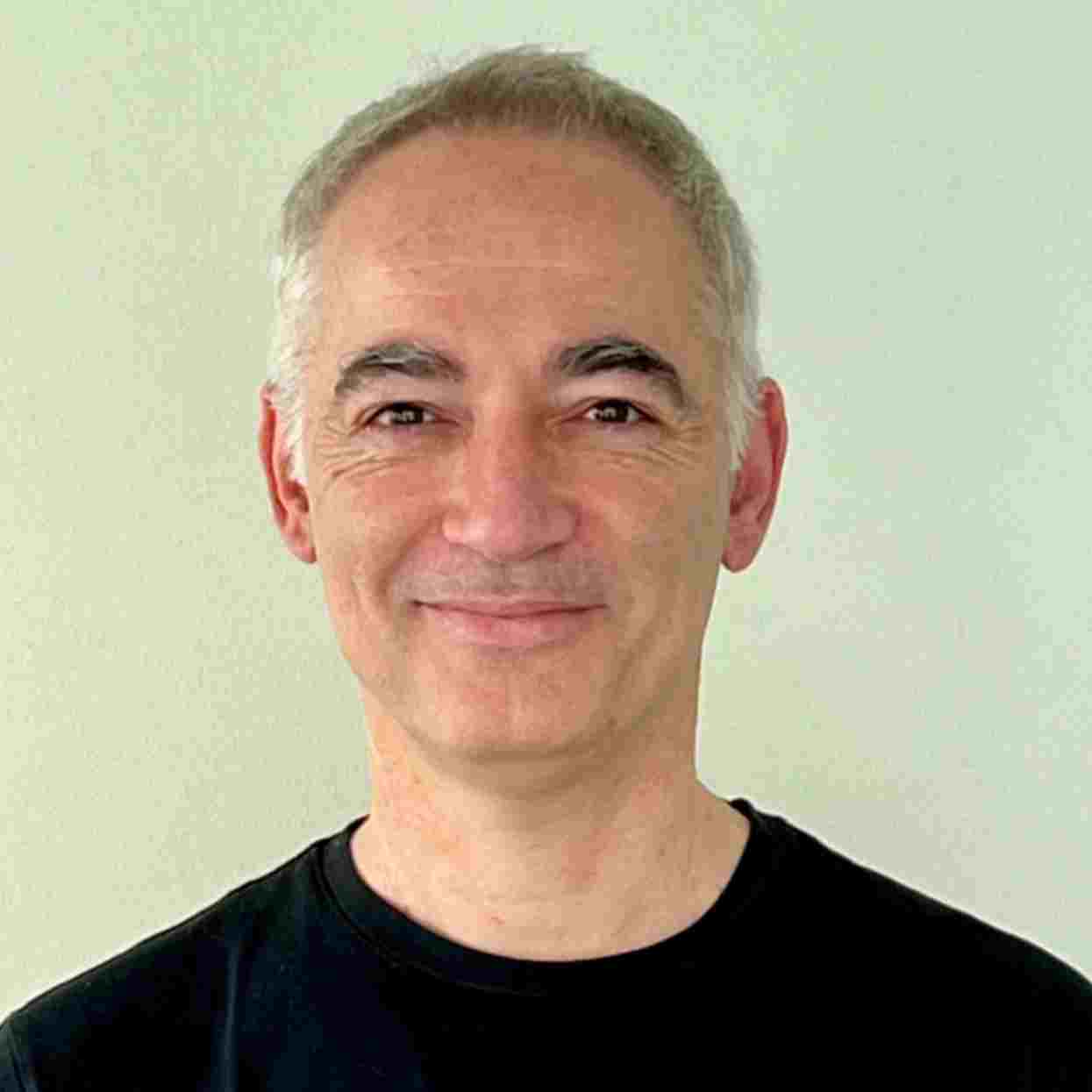
My article, titled 'No Way Out of the Smartphone Epidemic Without Considering the Insights of Brain Research,' has been republished in the International Journal of Clinical Case Reports and Reviews. The review process was seamless and professional, with the editors being both friendly and supportive. I am deeply grateful for their efforts.
To Dear Erin Aust – Editorial Coordinator of Journal of General Medicine and Clinical Practice! I declare that I am absolutely satisfied with your work carried out with great competence in following the manuscript during the various stages from its receipt, during the revision process to the final acceptance for publication. Thank Prof. Elvira Farina
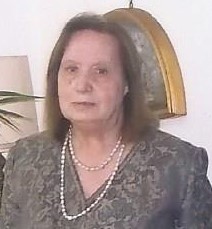
Dear Jessica, and the super professional team of the ‘Clinical Cardiology and Cardiovascular Interventions’ I am sincerely grateful to the coordinated work of the journal team for the no problem with the submission of my manuscript: “Cardiometabolic Disorders in A Pregnant Woman with Severe Preeclampsia on the Background of Morbid Obesity (Case Report).” The review process by 5 experts was fast, and the comments were professional, which made it more specific and academic, and the process of publication and presentation of the article was excellent. I recommend that my colleagues publish articles in this journal, and I am interested in further scientific cooperation. Sincerely and best wishes, Dr. Oleg Golyanovskiy.
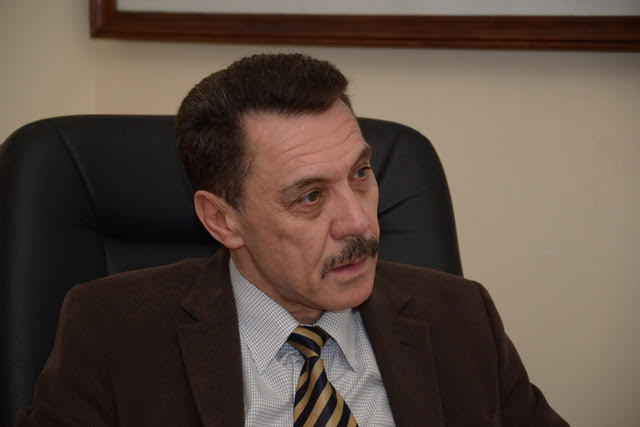
Dear Ashley Rosa, Editorial Coordinator of the journal - Psychology and Mental Health Care. " The process of obtaining publication of my article in the Psychology and Mental Health Journal was positive in all areas. The peer review process resulted in a number of valuable comments, the editorial process was collaborative and timely, and the quality of this journal has been quickly noticed, resulting in alternative journals contacting me to publish with them." Warm regards, Susan Anne Smith, PhD. Australian Breastfeeding Association.
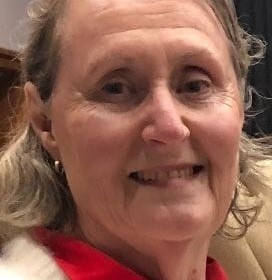
Dear Jessica Magne, Editorial Coordinator, Clinical Cardiology and Cardiovascular Interventions, Auctores Publishing LLC. I appreciate the journal (JCCI) editorial office support, the entire team leads were always ready to help, not only on technical front but also on thorough process. Also, I should thank dear reviewers’ attention to detail and creative approach to teach me and bring new insights by their comments. Surely, more discussions and introduction of other hemodynamic devices would provide better prevention and management of shock states. Your efforts and dedication in presenting educational materials in this journal are commendable. Best wishes from, Farahnaz Fallahian.
Dear Maria Emerson, Editorial Coordinator, International Journal of Clinical Case Reports and Reviews, Auctores Publishing LLC. I am delighted to have published our manuscript, "Acute Colonic Pseudo-Obstruction (ACPO): A rare but serious complication following caesarean section." I want to thank the editorial team, especially Maria Emerson, for their prompt review of the manuscript, quick responses to queries, and overall support. Yours sincerely Dr. Victor Olagundoye.

Dear Ashley Rosa, Editorial Coordinator, International Journal of Clinical Case Reports and Reviews. Many thanks for publishing this manuscript after I lost confidence the editors were most helpful, more than other journals Best wishes from, Susan Anne Smith, PhD. Australian Breastfeeding Association.
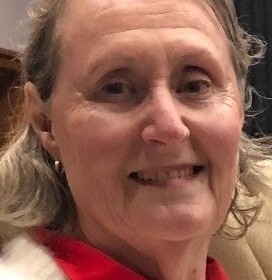
Dear Agrippa Hilda, Editorial Coordinator, Journal of Neuroscience and Neurological Surgery. The entire process including article submission, review, revision, and publication was extremely easy. The journal editor was prompt and helpful, and the reviewers contributed to the quality of the paper. Thank you so much! Eric Nussbaum, MD
Dr Hala Al Shaikh This is to acknowledge that the peer review process for the article ’ A Novel Gnrh1 Gene Mutation in Four Omani Male Siblings, Presentation and Management ’ sent to the International Journal of Clinical Case Reports and Reviews was quick and smooth. The editorial office was prompt with easy communication.

Dear Erin Aust, Editorial Coordinator, Journal of General Medicine and Clinical Practice. We are pleased to share our experience with the “Journal of General Medicine and Clinical Practice”, following the successful publication of our article. The peer review process was thorough and constructive, helping to improve the clarity and quality of the manuscript. We are especially thankful to Ms. Erin Aust, the Editorial Coordinator, for her prompt communication and continuous support throughout the process. Her professionalism ensured a smooth and efficient publication experience. The journal upholds high editorial standards, and we highly recommend it to fellow researchers seeking a credible platform for their work. Best wishes By, Dr. Rakhi Mishra.

Dear Jessica Magne, Editorial Coordinator, Clinical Cardiology and Cardiovascular Interventions, Auctores Publishing LLC. The peer review process of the journal of Clinical Cardiology and Cardiovascular Interventions was excellent and fast, as was the support of the editorial office and the quality of the journal. Kind regards Walter F. Riesen Prof. Dr. Dr. h.c. Walter F. Riesen.

Dear Ashley Rosa, Editorial Coordinator, International Journal of Clinical Case Reports and Reviews, Auctores Publishing LLC. Thank you for publishing our article, Exploring Clozapine's Efficacy in Managing Aggression: A Multiple Single-Case Study in Forensic Psychiatry in the international journal of clinical case reports and reviews. We found the peer review process very professional and efficient. The comments were constructive, and the whole process was efficient. On behalf of the co-authors, I would like to thank you for publishing this article. With regards, Dr. Jelle R. Lettinga.

Dear Clarissa Eric, Editorial Coordinator, Journal of Clinical Case Reports and Studies, I would like to express my deep admiration for the exceptional professionalism demonstrated by your journal. I am thoroughly impressed by the speed of the editorial process, the substantive and insightful reviews, and the meticulous preparation of the manuscript for publication. Additionally, I greatly appreciate the courteous and immediate responses from your editorial office to all my inquiries. Best Regards, Dariusz Ziora
